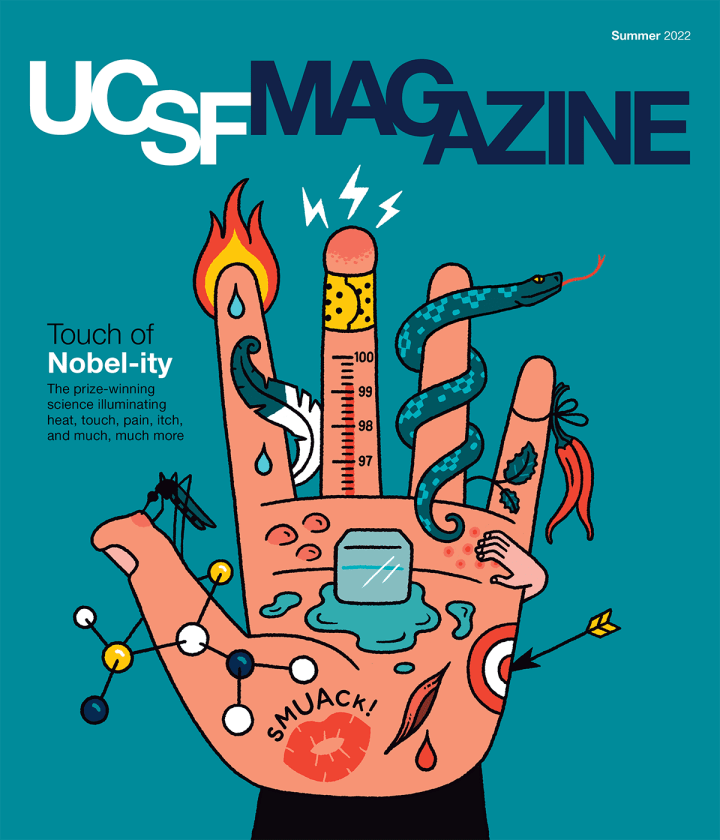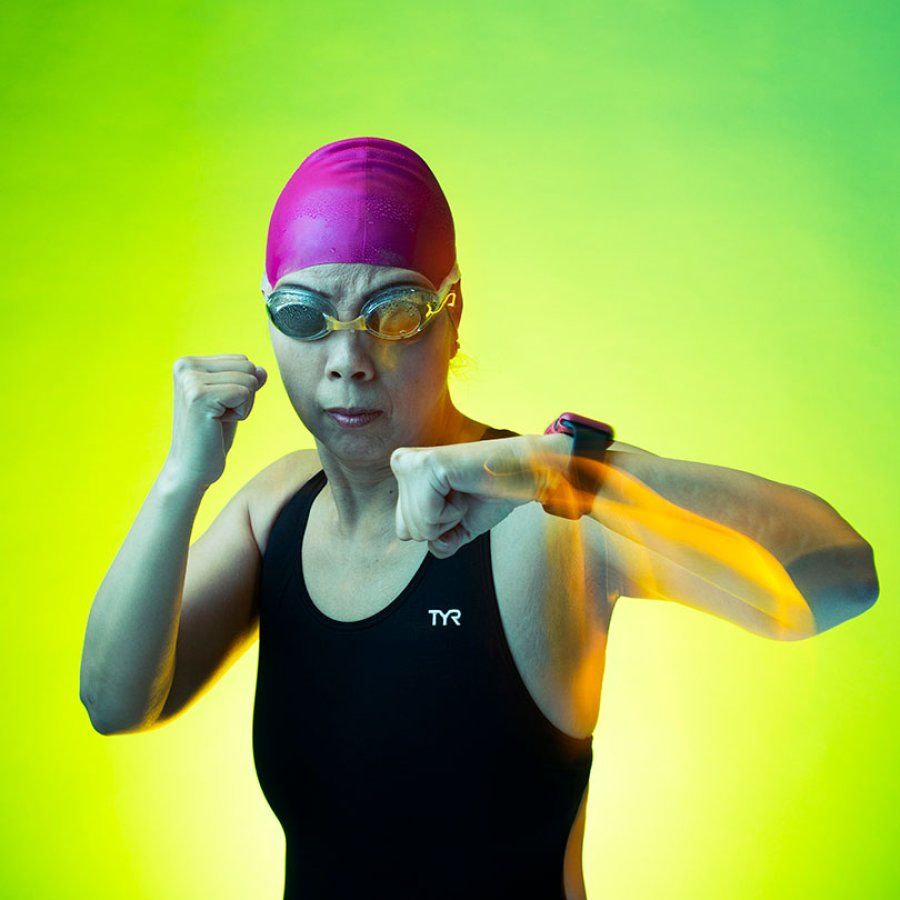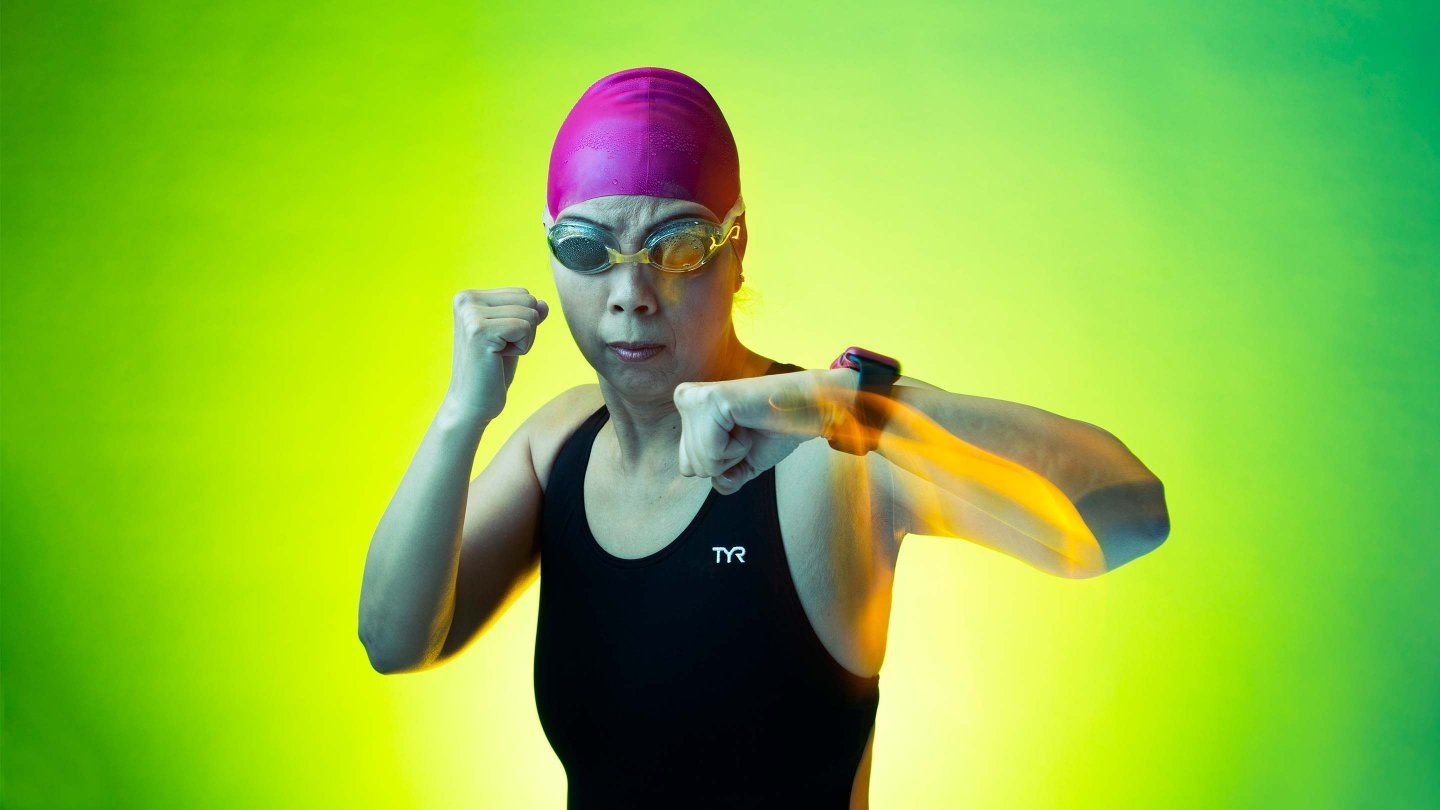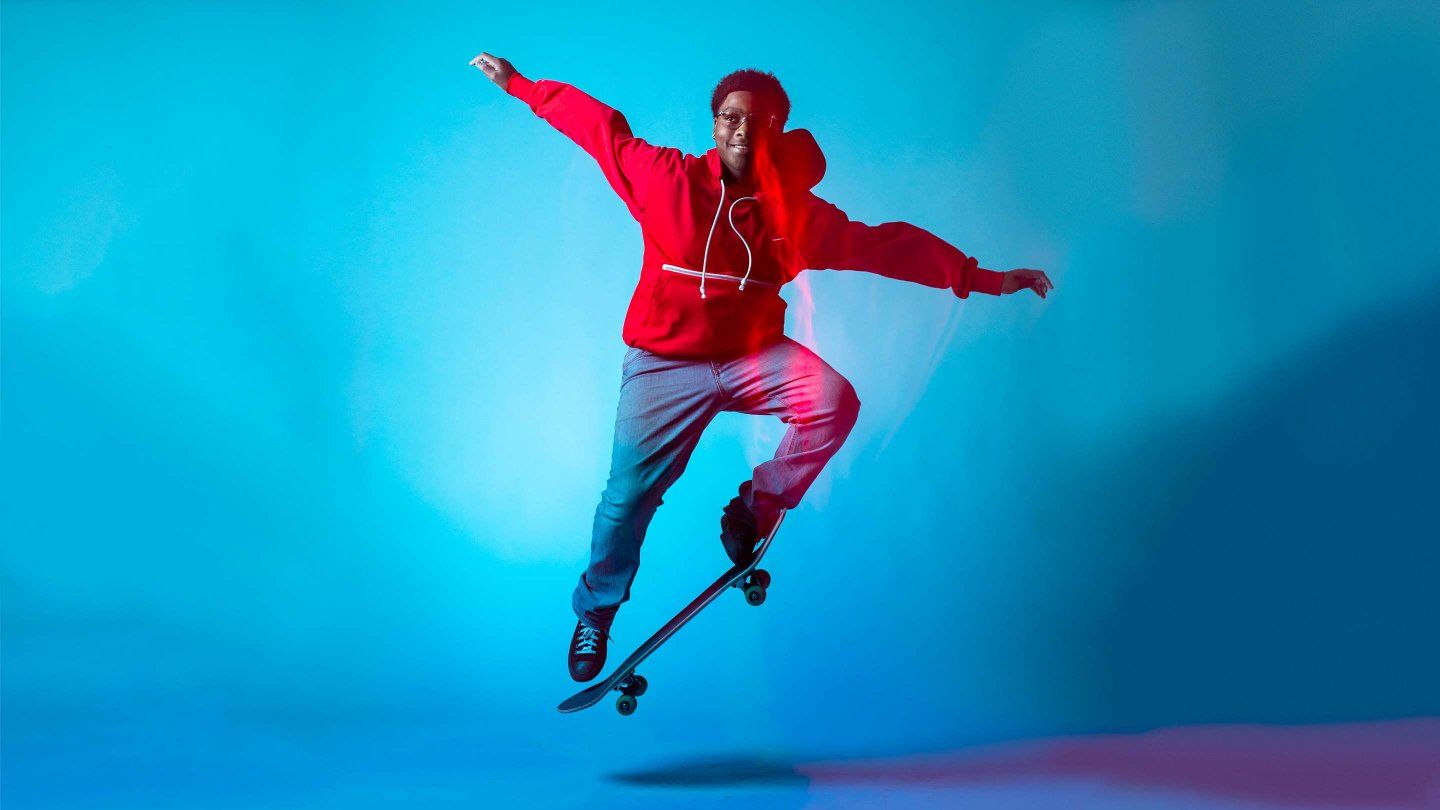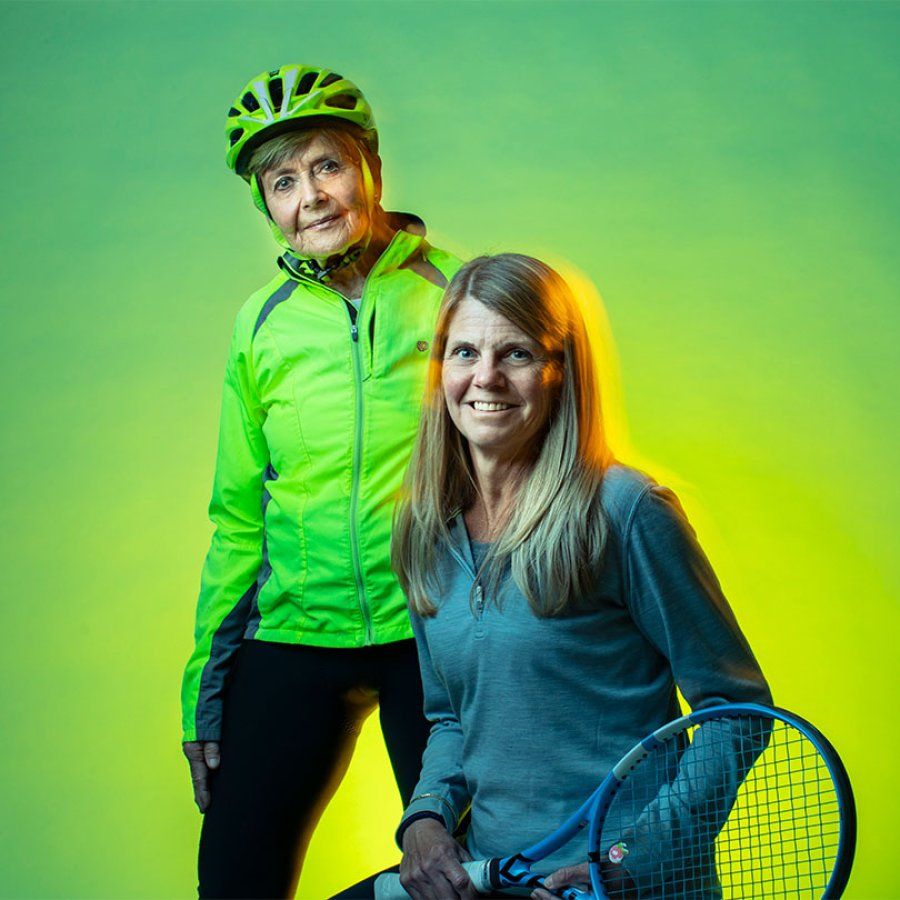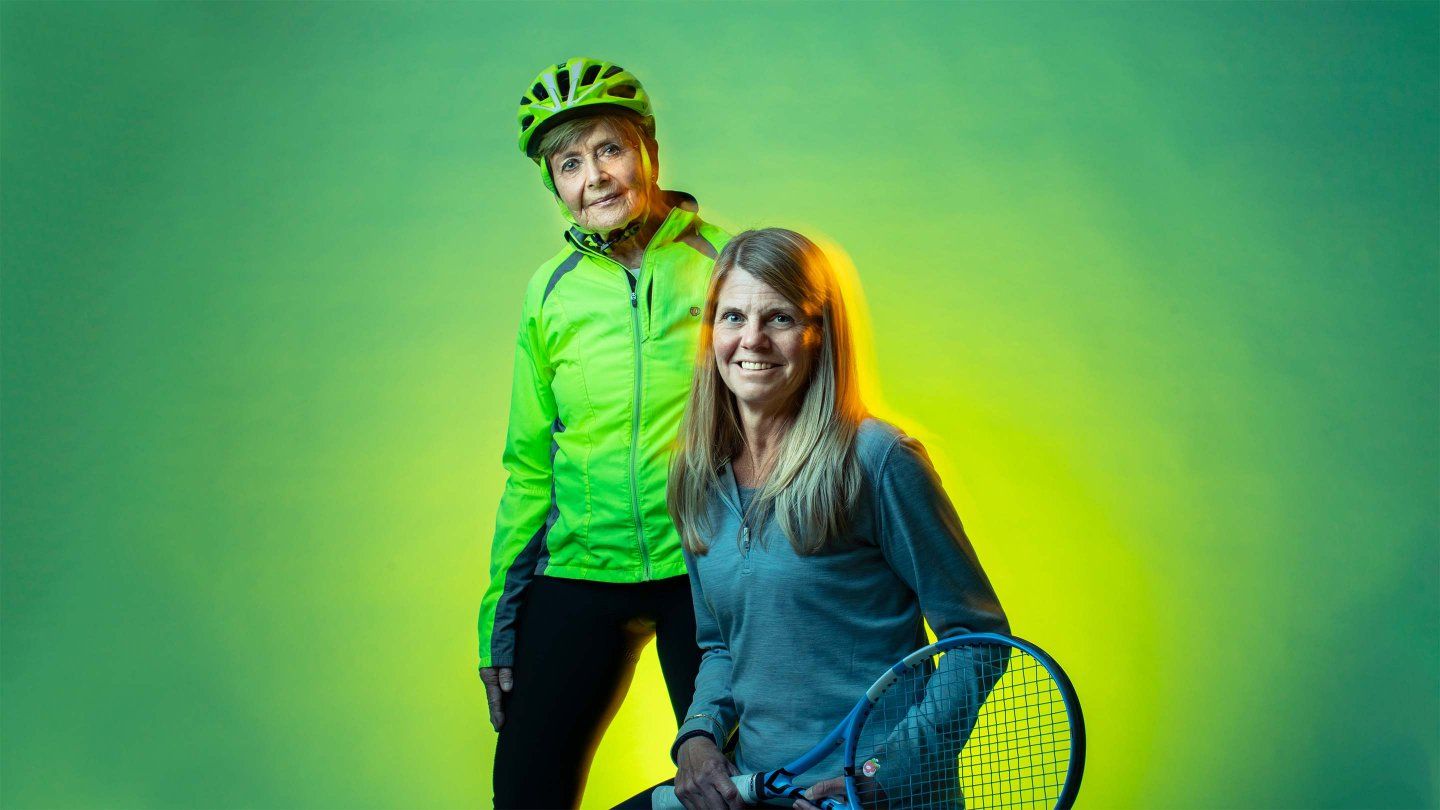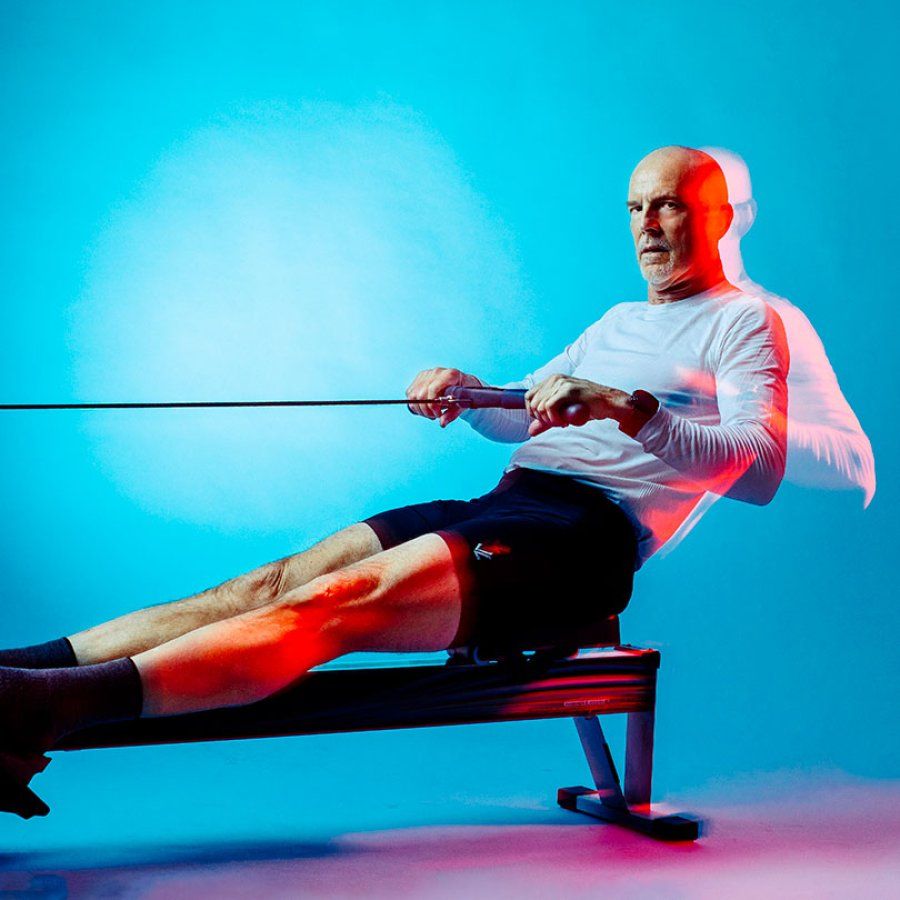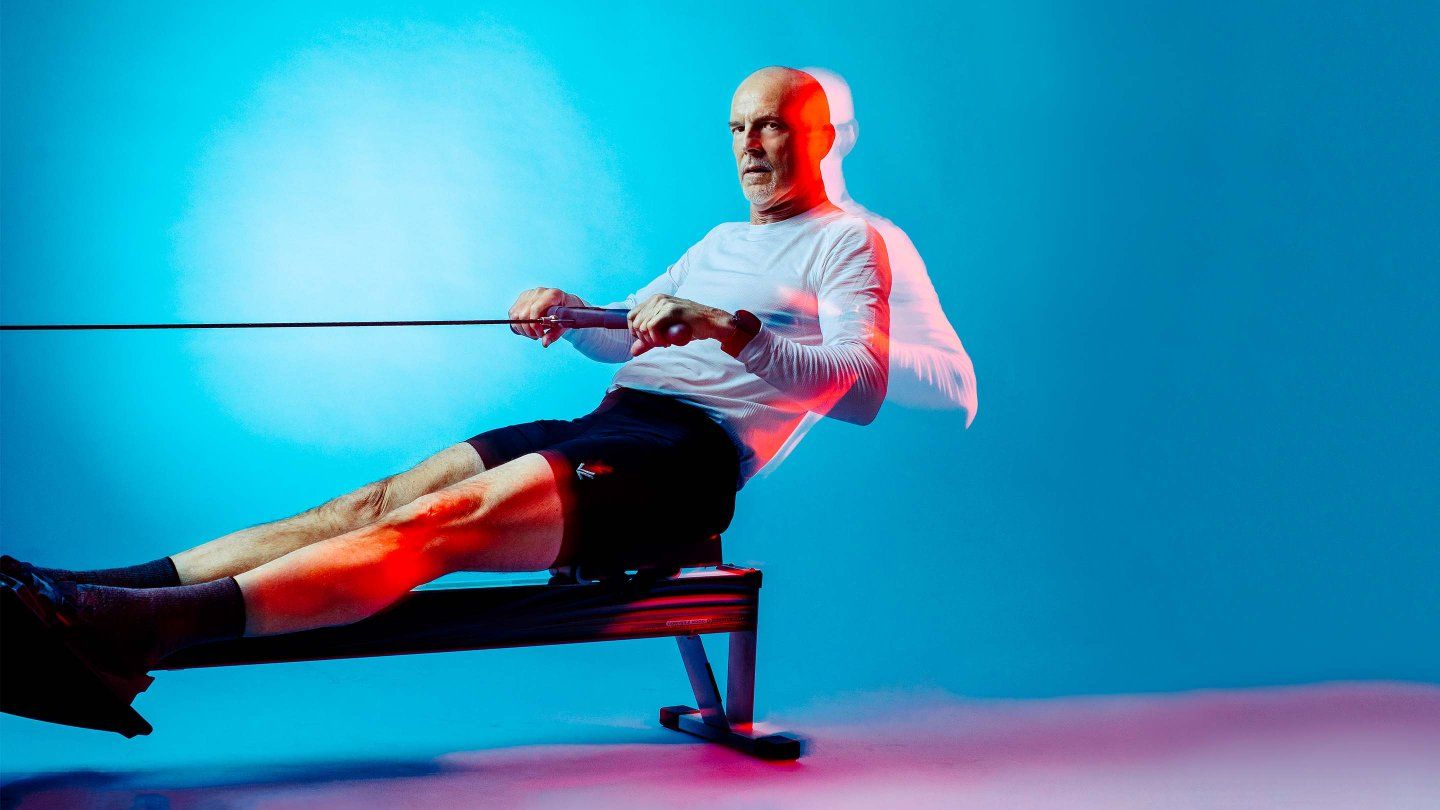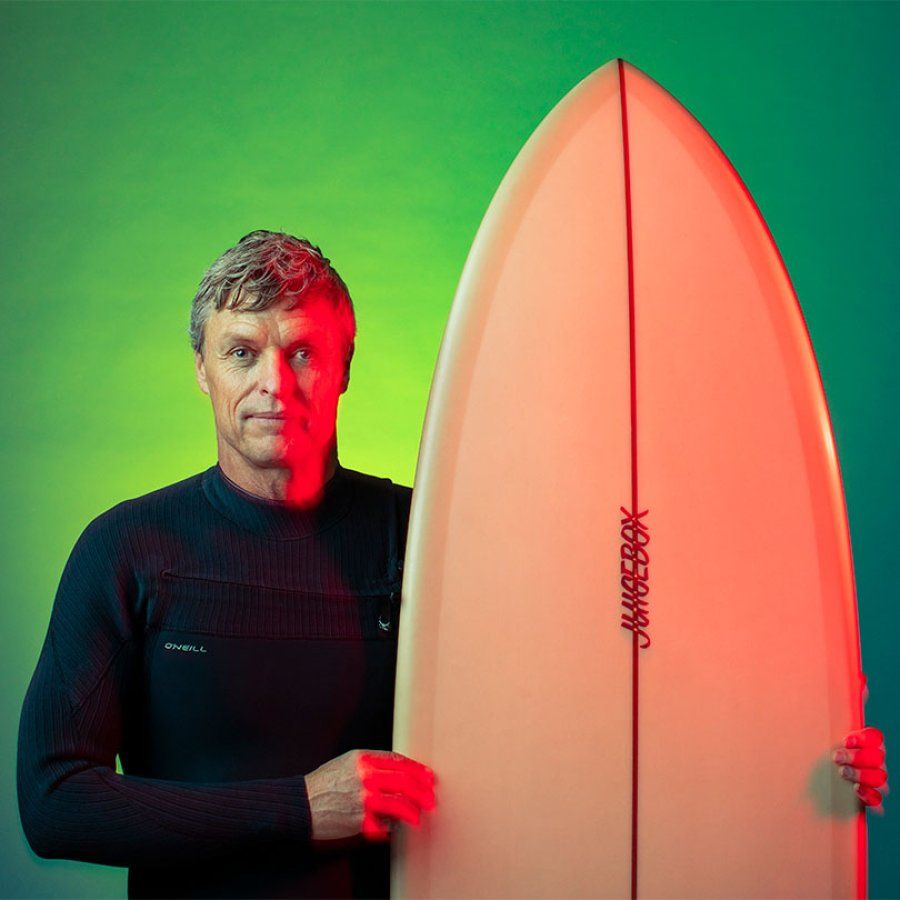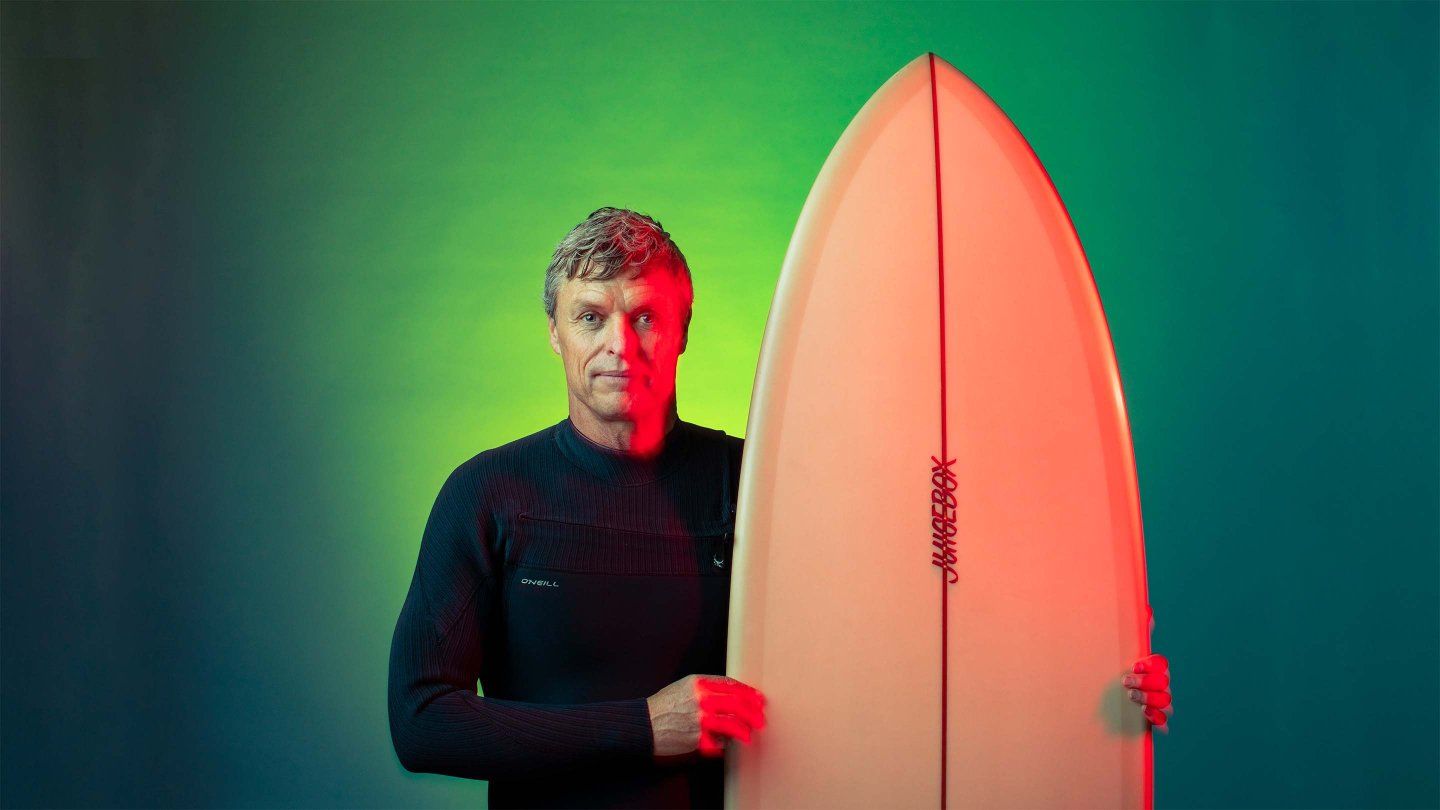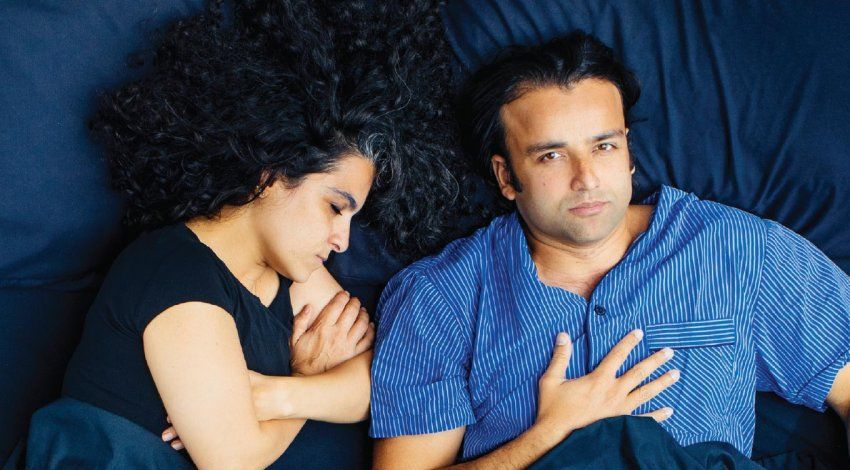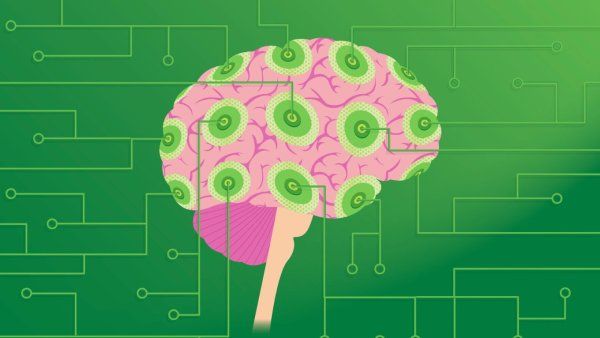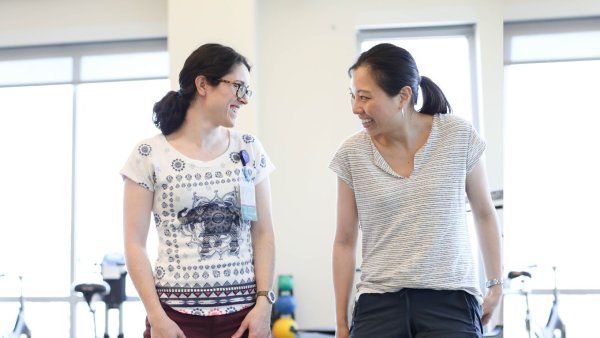You may not serve like Serena or sink three-pointers like Steph, but if you’re an athlete, you likely have one thing in common with those superstars. No, it’s not a Twitter account. It’s injuries. But rest assured, you’re in good company. An estimated 8.6 million sports- and recreation-related injuries occur in the U.S. every year. Ouch. Big ouch.
Fortunately, sports medicine experts at UC San Francisco are happy to share their savvy on how to run, ski, swim, bike, kick, and hike forever. OK, maybe not forever, but perhaps long enough to embarrass your kids or grandkids when you slip into your spandex workout shorts or running tights. If being and staying active sparks joy in your heart, read on. There’s hope of keeping you in the game, on the trails, in the water, and on the courts.
In a hurry? Zoom down to our experts’ top tips for avoiding injuries and staying active for life.
Kids Are Not Little Adults
When orthopaedic surgeon Nirav Pandya, MD, started his practice a decade ago, he rarely saw 11- or 12-year-olds with torn knee ligaments. Now, several times a month, he sees 9- or 10-year-olds with ACL (anterior cruciate ligament) tears.
Pandya, UCSF’s chief of pediatric orthopaedic surgery, has also witnessed an uptick in young athletes with cartilage injuries – damage to the smooth endcaps on bones that allow joints to glide normally. Damaged cartilage is like a pothole – the joint can’t move easily – and it causes pain, swelling, and stiffness.
Why the rise in blown ACLs and prematurely pitted cartilage? Pandya attributes this to early single-sport specialization. Instead of playing for fun, kids now train like adults, concentrating on just soccer or just basketball, for example, and getting adult-type injuries.
“We’re doing these major reconstructive procedures on very young children,” says Pandya. “It’s a warning sign for parents out there.”
Alan Zhang, MD, an associate professor of orthopaedic surgery, says overtraining while a child’s skeleton is still maturing can affect the growth plate and hip joint, too. “It can cause the hip to form an abnormal shape, with excess bone,” says Zhang, who directs UCSF’s Hip Preservation Center. “This can lead to additional friction or impingement in the joint, with wear and tear of the hip labrum, which is crucial for maintaining hip stability. This can even potentially lead to early arthritis.”
Until a decade ago, kids with hip injuries or labral tears had few treatment options. The advent of advanced hip arthroscopy technology and surgical techniques – Zhang’s specialty – now allows younger athletes with hip injuries to return to sports. Zhang hopes they’ll also prevent future hip arthritis.
Likewise, ACLs can be reconstructed and small cartilage defects repaired. “There are a lot of new options for placing lab-grown cartilage into the knee or doing cartilage transplants,” says Pandya. Surgeons can harvest cartilage from cadavers, or from patients themselves, and transplant it into a damaged knee. It’s like biological spackle – instead of patching divots in your wall, you’re smoothing living tissue over cratered cartilage.
We should be trying to create a culture that allows kids to be healthy and active for their whole lives.”
Of course, avoiding such injuries altogether is better yet. “The best cartilage is the one that you’re born with,” Pandya says. “When kids damage their cartilage, it can be really limiting. They have a lifetime of high-impact activity ahead of them, even if they’re not playing sports.” This can spell trouble if injuries aren’t managed by pediatric specialists.
“Children are not little adults,” says Pandya. “If you try to use adult principles to treat these young athletes, you’re going to fail.” Not only are their bodies still growing but their emotional needs also differ from those of older athletes.
Pandya, a competitive long- and triple-jumper in college, directs the UCSF Sports Medicine Center for Young Athletes, which offers care exclusively for kids and adolescents. Now in its 18th year, the center has a half-dozen locations around the Bay Area and includes initiatives such as the PlaySafe Sports Medicine Program, which sends athletic trainers into Bay Area schools to help young athletes from diverse socioeconomic backgrounds get the care they need.
His advice for keeping young athletes healthy? “Make sure your kids are engaged in multiple activities, and let them figure out what they’re passionate about on their own,” Pandya says. “We should be trying to create a culture that allows kids to be healthy and active for their whole lives. Sports are supposed to be fun and joyful.”
What Female Athletes Face
Sara Edwards, MD, knows the agony of being a sidelined athlete. A traumatic car accident during her senior year of high school ended her high-jumping career. Told that she might never walk again, the tenacious teenager defied expectations by running a lap around the track a year to the day after her accident. Once an athlete, always an athlete, she says.
Edwards, who eventually became a competitive triathlete, is in good company as the director of the UCSF Women’s Sports Medicine Center. Her colleagues include a former collegiate national rowing champion, a former Cirque du Soleil acrobat, an avid beach volleyball player, a scuba diver, and a skier – all women.
“We have more female orthopaedic surgeons and primary care sports medicine doctors than any other facility in the country,” she says. The center has also piloted several studies that focus on the role gender plays in sports injuries, such as why women have more trouble with shoulder rotation after shoulder replacement surgery than men do.
“There are multiple problems that occur either specifically or more commonly in female athletes,” says Edwards. For example, female basketball or soccer collegiate athletes are two to eight times more likely to injure their ACL and nearly twice as likely to get a bone stress reaction as males.
When we see people who are aging well, they all exercise.”
Also, estrogen levels, which are key to maintaining bone density, drop as women age. After menopause, this drop accelerates, and women become more susceptible to what are known as fragility fractures. Counterintuitively, high-impact exercise helps maintain bone strength after menopause. But Edwards cautions that it’s important to gradually build up your activity level. Additionally, she suggests weight lifting and strength training to prevent aging-associated bone loss, and balance exercises such as tai chi or yoga to help prevent falls.
The center’s primary care sports medicine physicians evaluate all of the factors that might affect a female athlete – bone health issues, hormonal changes, and nutritional needs, to name a few – and develop a comprehensive plan for each woman. “I try to understand what athletics means to each patient,” says Carlin Senter, MD, the director of primary care sports medicine. “Together, we weigh risks and benefits and decide how to move forward.”
Movement is a key ingredient in the secret sauce for becoming a sassy septuagenarian. “When we see people who are aging well, they all exercise,” says Edwards. “Our goal is to keep people active for life.”
The Cutting Edge is Cutting Less
So maybe you’ve done everything right. You did your core work. You cross-trained. Perhaps you even endured the foam roller. And yet you’re sitting there, annoyed and in pain with an achy knee, a torn meniscus, or a busted shoulder.
That’s going to be the future – doing restorative and maintenance treatments instead of damage-control surgeries.”
Though there are no quick fixes, sports medicine specialists are pursuing new ways to solve these woes. Internationally recognized surgeon and researcher C. Benjamin Ma, MD, UCSF’s V-Nee Yeh Professor of Orthopaedic Surgery, is optimistic that it may soon be possible to regenerate injured tissue. “That’s going to be the future – doing restorative and maintenance treatments instead of damage-control surgeries,” says Ma, who as former chief of sports medicine at UCSF was instrumental in building up the program.
So, what about those achy knees? Osteoarthritis, the most common form of arthritis, affects over 32.5 million people in the U.S – frequently their knees, hips, and shoulders. The resulting swelling, stiffness, and pain can make activity uncomfortable or even impossible.
“Osteoarthritis is more than just the loss of cartilage,” says Brian Feeley, MD, chief of sports medicine and shoulder surgery and the Ron Conway Family Professor of Sports Medicine Research. “It’s also structural changes to the bone underneath the cartilage, plus inflammation within the joint.”
So why can’t we just insert filler or stem cells to Zamboni the damaged cartilage? Unfortunately, the reality is much more intractable. While small areas of damaged cartilage can be patched with a transplant, it’s not possible to fill in large swaths. “Even if we were to stimulate growth in an area that has lost cartilage,” says Feeley, “it won’t solve the other underlying problems that have been going on for decades.”
One solution might involve retraining the body to move with less pain and greater efficiency, a goal of the UCSF Human Performance Center. Using sophisticated tools such as motion capture systems (think Marvel movies), Google sensors, and Apple Watches, researchers explore how to maximize function and how activity improves overall health.
“A lot of the same technologies that we use for elite athletes should actually be used for everyday athletes because they function the same way, just at a different level,” says Anthony Luke, MD, MPH, the center’s director. He also sees promise in platelet-rich plasma (PRP), which involves processing the patient’s own blood to concentrate platelets and growth factors in plasma. Luke, the Lynne and Marc R. Benioff Distinguished Professor of Sports Medicine, studies how PRP works at a cellular level in osteoarthritis and whether there’s a way to optimize its effects.
For advanced osteoarthritis, a joint replacement is often almost a miracle cure, notes Feeley. Getting an artificial hip or knee isn’t “giving up,” he says. “It is one of the wonders of the 20th century that will lead to a successful and active next 15 to 20 years.” Modern implants usually allow patients to go home within a day of surgery, if not the same day, and return to activities sooner and with less pain.
Meniscus issue? You’re not alone. Meniscus surgery is one of the three most frequently performed arthroscopic procedures in the U.S.
“Forty years ago, the meniscus was considered completely useless, and surgeons just removed damaged ones,” says Nicholas Colyvas, MD, a professor of orthopaedic surgery and the director of UCSF’s Meniscus Preservation Center. The meniscus – a tough, rubbery, C-shaped piece of cartilage – acts like a shock absorber between the upper and lower leg bones. It protects the smooth articular cartilage that caps each bone. Meniscus removal can be very effective for reducing pain, but risks include developing arthritis later in life. “Now, where possible, we repair it rather than removing it,” says Colyvas.
But meniscus repair isn’t a slam dunk. Not all damaged menisci are candidates for repair. Recovery from a repair takes longer than from a removal, and sometimes a repair simply doesn’t heal. However, UCSF is creating novel techniques that improve the odds of success.
One such approach – called circumferential suturing, since the sutures surround the meniscus – allows surgeons to repair types of tears that were not fixable in the past. UCSF is also developing ways to repair radial tears, in which the meniscus is torn from the center of its “C” shape to its outer edge. “When you walk and when you bear weight,” says Colyvas, “the forces tend to push the repaired pieces apart. Your knee is naturally working against the healing process.” But his hope is that techniques now in development that are strong enough to resist those forces will one day be used in the operating room.
Meniscus transplants may be an option when repairs aren’t possible, especially for younger patients, to avoid the risk of arthritis due to removal. But transplants come from cadaver tissue, and thus are scarce and hard to size properly. They can also have a high failure rate, although UCSF is researching ways to improve transplant outcomes. Colyvas is optimistic about an artificial meniscus currently in clinical trials in the U.S., particularly for patients too young for joint replacement.
There’s hope on the horizon for injured shoulders, too. Anyone who’s had a rotator cuff injury knows it makes a tennis serve or a freestyle stroke excruciating. For such injuries, biologics – medicines derived from living cells or containing components of living organisms – hold great promise for speeding up healing.
Feeley’s research team discovered that special stem cells called fibro-adipogenic progenitors (FAPs) can stimulate muscle regeneration during rotator cuff repairs. Eventually, it may be possible to influence patients’ own stem cells in their rotator cuff to regenerate healthy muscle.
“I can now take stem cells from a patient during rotator cuff repair and determine how many specific stem cells they have and what capabilities those cells have for regeneration,” says Feeley. “In the next five to 10 years, we’ll be able to add pharmacologic agents that will stimulate those stem cells to promote regeneration at the time of surgery in a manner that’s time- and cost-effective.”
Regenerative techniques might also work for other injuries. Using animal models, Feeley’s team found FAPs in spinal muscles that are similar to those in the rotator cuff. If present in humans, these stem cells could offer a way to stimulate muscle regeneration in patients recovering from spinal surgery or suffering from low back pain.
Knowing which treatments will work best for which patients is key. In the near future, the power of big data will make it possible to personalize treatments based on an individual’s genetic makeup and a multitude of other factors. Unfortunately, big data can’t help you serve like Serena. Yet.
Top tips to stay active for life
-
Continue the habits that kept you healthy when you were younger. Play a variety of sports or pick up a new one.
-
Strive for at least 150 minutes a week of moderate-intensity exercise to improve cardiovascular fitness and decrease the risk of cancer, dementia, diabetes, and high blood pressure.
-
Do strength training two to three times a week to improve bone health and balance.
-
Work on balance and flexibility to reduce the risk of falls and improve sciatica and knee arthritis.
-
After an injury or break, start slowly and gradually increase your intensity as you resume exercising.
-
Maintain a healthy weight. Walking and running exert pressure on your knees equivalent to nearly three to four times your body weight.
-
Get a good night’s sleep to assist in recovery.
-
Modify your activities as you age so you can remain active without pain – or with an acceptable amount of pain.
-
Have fun!
-
For Kids
-
Keep sports fun and joyful. Make sure kids engage in multiple activities and let them discover what they’re passionate about on their own.
-
Don’t let kids specialize too early. Give their bodies a chance to mature.
-
Don’t let kids push through pain. If something hurts, have a physician check it out.
-
Keep an eye on the long game – help kids establish a healthy lifestyle that will carry into adulthood.
